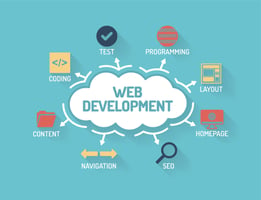In the ever-evolving world of web development, understanding the core technologies that power...
What is HTML? Uses & Basics Explained

In the digital age, understanding the basics of web development is becoming increasingly valuable. One of the foundational technologies behind every website you visit is HTML. But what exactly is HTML, and why is it so essential? In this blog, we'll break down the fundamentals of HTML, its uses, and why it's a critical skill for anyone interested in the web.
What is HTML?
HTML stands for HyperText Markup Language. It is the standard language used to create and design web pages. HTML provides the basic structure of a website, using a system of tags to format text, images, links, and other content. Think of HTML as the backbone of a webpage; it organizes and outlines content in a way that browsers can understand and display.
The Purpose of HTML
The primary purpose of HTML is to structure content on the web. It dictates how elements on a page are arranged and presented. When you view a website, HTML works behind the scenes to ensure that text appears in the right format, images are displayed correctly, and links connect to other pages or websites.
HTML is not responsible for the visual style or interactive elements—that's where CSS (Cascading Style Sheets) and JavaScript come into play. Instead, HTML provides the essential framework that makes web content accessible and organized.
Basic Elements of HTML
Understanding HTML involves learning about its basic components, known as "tags." Tags are enclosed in angle brackets and are used to define different types of content. Here are some key elements:
-
Headings: Headings define the titles and subtitles on a page. They range from
<h1>(the largest) to<h6>(the smallest). Headings help organize content and make it easier to read. -
Paragraphs: Paragraphs are defined with the
<p>tag. They break up text into readable chunks and provide structure to written content. -
Links: Links, created with the
<a>tag, connect one web page to another. They allow users to navigate between pages and sites. -
Images: Images are included using the
<img>tag. This tag allows you to display pictures on a web page. -
Lists: Lists can be either ordered (numbered) or unordered (bulleted). They are defined using the
<ol>and<ul>tags, respectively, with each item in the list marked by<li>. -
Tables: Tables are used to organize data in rows and columns. They are created with the
<table>,<tr>(table row),<td>(table data), and<th>(table header) tags.
How HTML Works
HTML documents are structured in a hierarchical format, with elements nested inside one another. A typical HTML document starts with a <!DOCTYPE html> declaration, followed by the <html> tag that contains the entire document. Inside the <html> tag, you'll find the <head> and <body> sections.
-
The
<head>section contains metadata about the document, such as the title (displayed in the browser's title bar or tab) and links to stylesheets or scripts. -
The
<body>section contains the content that is visible to users, such as text, images, and links. This is where the majority of your HTML elements are placed.
Uses of HTML
-
Creating Web Pages: HTML is used to build the basic structure of web pages, including text, images, and links. Every website starts with HTML.
-
Organizing Content: HTML tags help organize content into sections, headings, paragraphs, and lists, making it easier for users to navigate and understand.
-
Embedding Media: HTML allows you to embed multimedia elements like images, audio, and video into your web pages, enhancing the user experience.
-
Building Forms: HTML forms enable users to interact with websites by entering information, such as contact details or search queries.
-
Linking Pages: HTML tags create hyperlinks that connect different pages on a website or external sites, facilitating easy navigation.
Why Learn HTML?
Understanding HTML is a fundamental skill for anyone interested in web development. It provides the foundation for creating and editing web pages, making it essential for building websites and web applications. Even if you don’t plan to become a web developer, knowing HTML can help you understand how websites work, customize your own site, or improve your ability to work with web-based tools and content management systems.
Conclusion
HTML is the backbone of web development, offering the essential framework needed to create and organize web pages. By learning HTML, you equip yourself with the skills to build and design websites, understand web content, and interact more effectively with the digital world. Whether you're aiming to develop professional websites, manage personal blogs, or simply grasp how the web functions, mastering HTML is a crucial first step.
For those looking to practice and refine their HTML skills, using an online compiler for html can be incredibly helpful. These tools allow you to write, test, and debug your HTML code in real-time, providing immediate feedback and facilitating a hands-on learning experience. Embrace HTML and explore online html compiler to enhance your web development journey.


